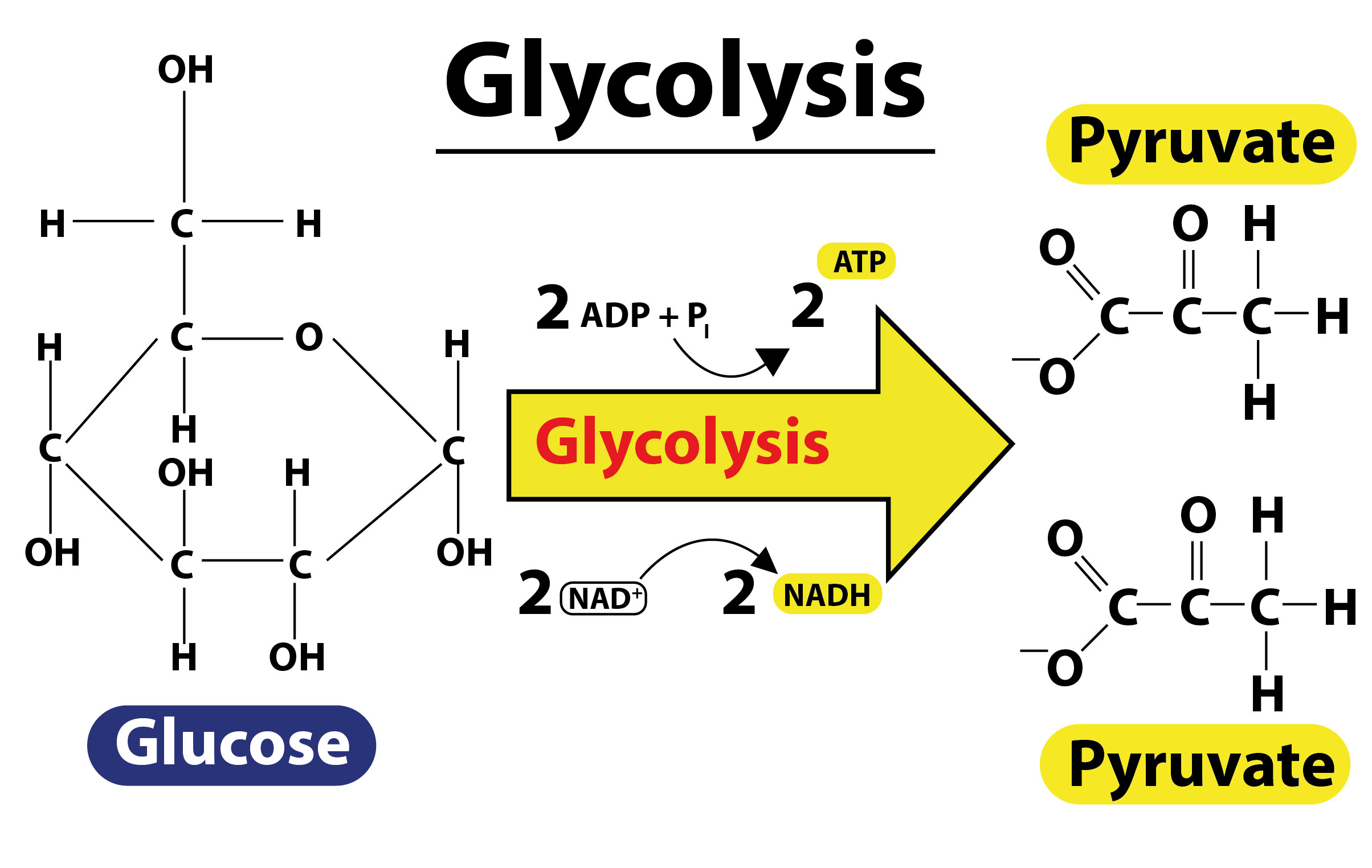
The number of ATP molecules utilized for the breakdown of one molecule of glucose during glycolysis is
(a)62
(b)2
(c)8
(d)4
Answer
494.1k+ views
Hint: Glycolysis is the process or pathway by which the glucose gets converted into pyruvate and hydrogen. The energy which is released in this process is in the form of ATP (Adenosine-triphosphate) is used for different metabolic activities of the cell.
Complete answer:
Glycolysis is the metabolic pathway where the partial oxidation of glucose takes place. In this process, the glucose molecule undergoes catabolism to produce two pyruvate molecules. In the complete process of glycolysis 4 ATPs are formed, but in that 2 are consumed in the process itself, due to which the net gain of ATP in the glycolysis process is 2 ATP.
The process of Glycolysis involves catalyzed reactions that involve ten enzymes. Other than Glucose, other monosaccharides like fructose and galactose will also get changed into any of these intermediates.
The intermediates can be directly utilized other than just using as steps in the whole reaction. One common example of this is the dihydroxyacetone phosphate (DHAP) which is an intermediate that is a glycerol source that joins with fatty acids, in order to create fat.
The broad presence of glycolysis in organisms proves that it is a metabolic pathway that formed in the early time of evolution and it is an oxygen-independent process.
So, the correct answer is 2.

Note: -The Adenosine triphosphate is known as the energy currency of the cells. Many cell metabolic activities and tissue regulations require ATP to perform.
-In several animals, they provide ATP for the formation of a peptide bond which demands energy to be formed. Peptide bonds are found between proteins.
-Heart muscle fibers are cylindrically shaped with multiple nuclei and multiple mitochondria to sustain the demanded energy. Extra mitochondria provide more energy by ATP production.
Complete answer:
Glycolysis is the metabolic pathway where the partial oxidation of glucose takes place. In this process, the glucose molecule undergoes catabolism to produce two pyruvate molecules. In the complete process of glycolysis 4 ATPs are formed, but in that 2 are consumed in the process itself, due to which the net gain of ATP in the glycolysis process is 2 ATP.
The process of Glycolysis involves catalyzed reactions that involve ten enzymes. Other than Glucose, other monosaccharides like fructose and galactose will also get changed into any of these intermediates.
The intermediates can be directly utilized other than just using as steps in the whole reaction. One common example of this is the dihydroxyacetone phosphate (DHAP) which is an intermediate that is a glycerol source that joins with fatty acids, in order to create fat.
The broad presence of glycolysis in organisms proves that it is a metabolic pathway that formed in the early time of evolution and it is an oxygen-independent process.
So, the correct answer is 2.

Note: -The Adenosine triphosphate is known as the energy currency of the cells. Many cell metabolic activities and tissue regulations require ATP to perform.
-In several animals, they provide ATP for the formation of a peptide bond which demands energy to be formed. Peptide bonds are found between proteins.
-Heart muscle fibers are cylindrically shaped with multiple nuclei and multiple mitochondria to sustain the demanded energy. Extra mitochondria provide more energy by ATP production.
Recently Updated Pages
Master Class 12 Business Studies: Engaging Questions & Answers for Success

Master Class 12 English: Engaging Questions & Answers for Success

Master Class 12 Social Science: Engaging Questions & Answers for Success

Master Class 12 Chemistry: Engaging Questions & Answers for Success

Class 12 Question and Answer - Your Ultimate Solutions Guide

Master Class 11 Economics: Engaging Questions & Answers for Success

Trending doubts
Draw a labelled sketch of the human eye class 12 physics CBSE

a Tabulate the differences in the characteristics of class 12 chemistry CBSE

Which one of the following is a true fish A Jellyfish class 12 biology CBSE

Why is the cell called the structural and functional class 12 biology CBSE

Differentiate between homogeneous and heterogeneous class 12 chemistry CBSE

Write the difference between solid liquid and gas class 12 chemistry CBSE




